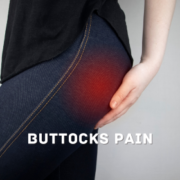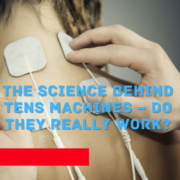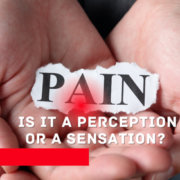Brain Alterations Caused by Chronic Pain
Low back discomfort is quite prevalent. In fact, if you don’t have any back discomfort every year or so, you’re considered weird. (Not that you’re losing out on anything significant.)
Fortunately, if you are experiencing back pain, your odds of getting rid of it quickly are great. Without any special intervention, more than 90% of acute back pain disappears on its own within a few weeks or months. However, for other patients, pain becomes chronic and lasts for years. Why does the course of back pain vary so greatly amongst people?
The solution is unlikely to be discovered by gazing just at the rear. For years, experts have attempted to explain back pain outcomes in terms of physical examination findings. However, gathering data on posture, core strength, or the health of vertebrae and discs offers nothing to assist you make accurate forecasts. Posture and MRI findings have a weak correlation with pain, and a single structural/physical explanation of back pain is unlikely.
Subjective aspects such as pain severity, poor mood, catastrophizing, depression, or work satisfaction have lately received increased attention. Accounting for these characteristics can help you anticipate back pain outcomes much more accurately than just examining the physical state of the back. But there would still be a lot of mystery.
Some extremely brilliant people are wondering if Vania Apkarian’s lab has uncovered the “Holy Grail” of understanding pain – the exact elements that lead some individuals to suffer chronic pain and others to recover.
If Apkarian is correct, the grail is located in the brain. (An essential reminder and caveat: just because the brain is a big component in pain does not mean that pain is “in your head,” that pain is your responsibility, that you can just think pain away, or that the body doesn’t matter.)
The following is a compilation of quotations from Apkarian’s lab papers. (See the bottom of the post for citations. The full text of each is freely accessible online.) These aid in summarizing the findings and interpretations of his fascinating study, which mostly entails scanning the brains of persons with and without back pain, as well as those at different phases of recovery or chronicity.
The interaction of nociception, acute pain, movement, and emotion
Pain is a conscious subjective feeling that is often triggered by nociceptive action. …
The conscious impression of acute pain is very changeable… Pain perception might reflect variations in value judgements from moment to moment.
The emotional limbic brain is important in bridging nociception and pain perception….
Nociceptors may function even when there is no pain perception…The main reason I fidget in my chair while writing this essay is because nociceptors in my skin, muscle, and bone tell me that my posture needs to be adjusted. …
Nociceptive regulation of behavior happens often in the absence of consciously observed pain, making it “subconscious.” …
If one exceeds their physiological range of motion, daily motor motions may easily cause harm and tissue damage… this supports the idea that nociceptors collectively restrict motor behaviors. …
We contend that nociception happens constantly in the absence of pain perception and is a basic physiological process… we assume that actions modified by nociception in the absence of pain are dependent on previously formed habitual repertoires. When pain is elicited, it causes new peripheral and spinal cord nociceptive learning/ sensitization, as well as emotional learning, which is amplified by the painful event’s prominence and perceived worth(2015, Baliki)
The Acute to Chronic Pain Transition
Only a small percentage of people who have an acute painful injury develop chronic pain(Hashmi 2013)
The vast majority (>90%) of people suffering from acute low back pain regain full function within days or weeks, with little or no lasting discomfort (Apkarian, A. 2009)
The research has failed to answer two crucial issues about chronic pain: 1) Who is at risk of having it? 2) What is the source of this vulnerability? (Hashmi 2013)
Earlier clinical research found a lengthy list of chronic pain risks, such as demographics, emotional states, lifestyle, comorbidities, and others; nonetheless, these characteristics account for a very modest amount of variation in chronic pain (10% to 20%). In contrast, the anatomic and functional features of the brain predict the onset of chronic pain with 80% to 100% accuracy.(Hashmi 2013)
There is now enough evidence that the architecture and physiology of the brain in chronic pain differs from that of healthy persons experiencing acute pain.(Vachon-Presseau 2016)
The cortico-limbic system, which is fundamental to reward and motivated behavior, has been identified as a modulator for acute pain and a mediator for chronic pain in a growing amount of animal and human research.(Vachon-Presseau 2016)
Individuals who suffered a severe back pain episode were followed for a year in a longitudinal brain-imaging research, during which pain and brain measures were recorded frequently. Strength of synchronization between the medial prefrontal cortex and the nucleus accumbens (i.e. functional connectivity) at the time of study admission was predictive (>80% accuracy) of persons who progressed to chronicity 1 year later. Apkarian, A. (2016).
There is now substantial evidence that all components of the corticolimbic system are influenced by, govern, or aggravate chronic pain states.(Vachon-Presseau 2016)
Chronic pain is being redefined
Unlock exclusive content now! Sign up for our membership plan to access premium features and unlock this private content. Click here to subscribe and enjoy unlimited access today.
Click here
And unlock the content.









